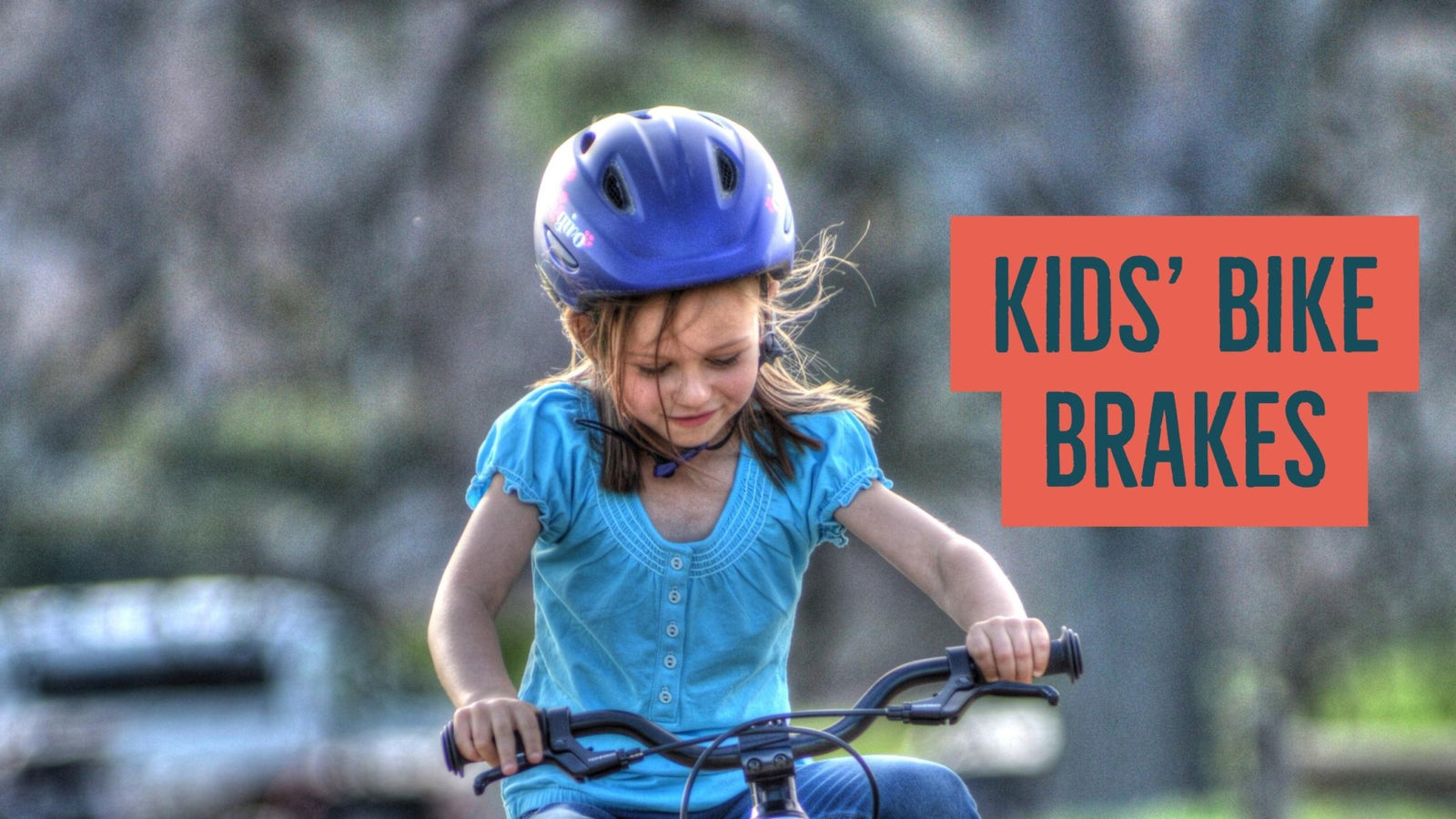There are two types of brakes that are common on kids' bikes: coaster brakes (aka "pedal brakes") and hands brakes (often rim brakes). We've spent a lot of time testing and observing children riding bikes and we believe that for most kids, a bike with hand brakes is the best option. We'll explain why.
Before we get started, a few caveats from our lawyers:
- Regardless of what kind of brakes are on your kid's bike, make sure that the rider understands how to operate them and has the strength and coordination to use them. Keep this in mind when transitioning a rider to a new bike that has a type of brake they do not have experience with.
- While we generally recommend hand brakes, we don't claim that they are the optimum brakes for all riders. For example, some riders with disabilities may be more effective at operating coaster brakes than hand brakes.
- In the United States, the CPSC requires certain bikes to be sold with coaster brakes. We're not looking to pick a fight with the CPSC. All Prevelo bikes are CPSC compliant and are third party certified to meet CPSC standards. Because of this, our Alpha One 14" comes with both front and rear hands brakes and a coaster brake. Parents can remove the coaster brake with an optional freewheel kit.
Enough from the lawyers, here are 9 reasons why we think hand brakes are the best setup for kids bikes:
Hand brakes are safer and tend to make children more confident than coaster brakes
One of the biggest problems with coaster brakes is that in order to operate the brakes, the rider's feet must be on the pedals. However, there are lots of good reasons a child might want to take their feet off the pedals - for example to brace for a stop or to stabilize while going down steep or bumpy terrain. Coaster brakes necessarily require the rider to sacrifice braking ability if they want to take their feet off the pedals. Hand brakes can be operated with the feet on or off of the pedals.
Hand brakes are not dependent on specific pedal position
Coaster brakes require the rider to back pedal in order to engage the brakes. There are certain positions in which the rider does not have good backpedaling leverage, for example when the pedals are at 12 o'clock and 6 o'clock. If the rider is in this position and wants to engage the brakes, the rider will need to pedal about 45 degrees forward before being able to brake. In an emergency, this could cause delay in braking...or worse, a flustered rider might not be able to brake at all.
Hand brakes provide better modulation
Hand brakes provide good rider feedback and are easier to modulate. That is, it is easier for a rider to control braking power. There are a variety of situations in which proper modulation is important, including controlling speed on a long descent and stopping on a loose or slippery surface (like sand or wet asphalt). In all of these situations, a rider who cannot properly modulate the brakes is likely to simply lock-up the rear wheel which can be frustrating and even dangerous.

Coaster brakes can frustrate kids who are just learning
When learning, many young riders tend to occasionally backpedal. When this engages the brakes, it can frustrate the learning experience.
Easier starting
It's easier to state the bike with one of the pedals in the 10 o'clock position, so that the rider can step on the pedal to give the bike an initial push. With a freewheel the rider can freely spin the pedals backwards when stopped to get the pedals into the correct position. With a coaster brake, the rider must roll the bike forward while applying pressure to the pedals to get the pedals into a good starting position.
More braking power
By design, coaster brakes only work on the rear wheel. All Prevelo pedal bikes come with both front and rear hand brakes. Braking on two wheels will stop a bike faster than braking on only one wheel. In fact, when brakes are applied the bike's weight is shifted to the front wheel, so the front brake provides significantly more stopping power than the rear brake.
Coaster Brakes are Heavy
Coaster brakes can add around a pound to a bikes total weight. Shedding the coaster brake saves this weight.
Modern hand brakes are easy to operate
Hand brakes have come a long way. The Tektro hand brakes that you will find on all of our Alpha Series bikes are extremely effective. They require little strength to operate and utilize child size short reach levers.
Hand brakes are a skill, Get your kid trained on that skill early
Most adult bikes have hand brakes. So most riders will eventually need to transition to hand brakes. Starting children on hand brakes young means that they won't have to re-learn how to brake.

The Prevelo Choice
100% of Prevelo bikes have hand brakes. Even our Alpha Zero balance bike has a rear hand brake. And all Prevelo pedal bikes have both front and rear hand brakes. As mentioned above, to comply with CSPC standards the Alpha One 14" has both front and rear hand brakes and a coaster brake. Parents can replace the coaster brake on the Alpha One with a freewheel with our optional freewheel kit. All other Prevelo pedal bikes come equipped with freewheels standard.

